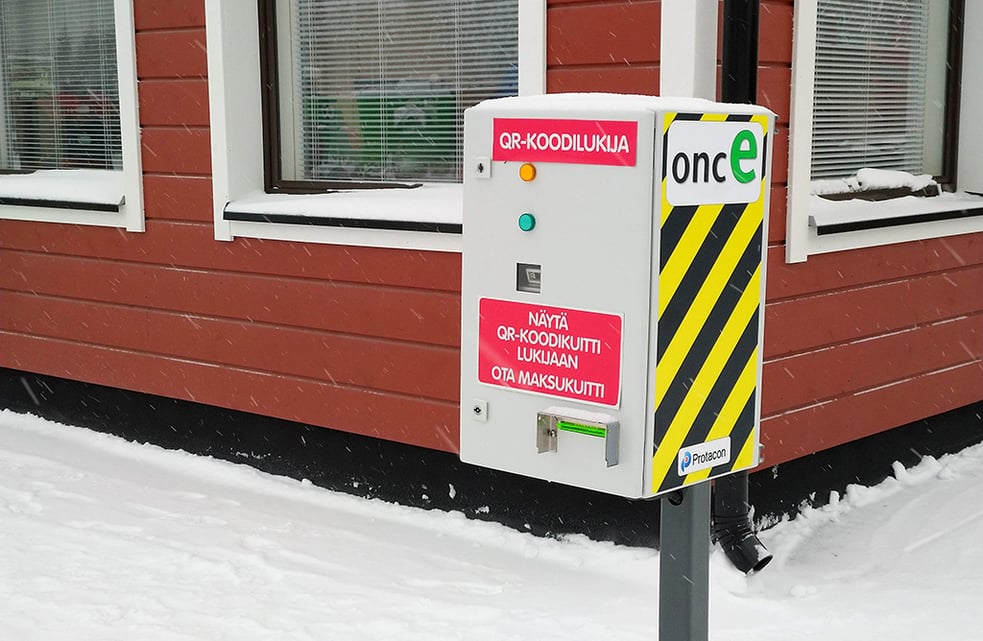
The business models of circular economy require a lot from logistics and the entire basis for business is lost if material management is inefficient and resources are wasted.
The business of companies operating in circular economy is based on efficient and sustainable use of raw materials and resources, thereby ensuring that their value is maintained for as long as possible and they are reused and recycled with maximum efficiency.
The business models of circular economy require a lot from logistics and the entire basis for business is lost if material management is inefficient and resources are wasted. In case of companies involved in circular economy, efficient management of the order and supply chain saves money, time and effort and lays the foundation for profitable business.
Circular economy gives rise to new business models
According to the Confederation of Finnish Industries, underlying the circular economy are three major transitions: scarcity of natural resources, climate change and the digital revolution accompanied by open collaboration as the necessary precondition for growth. As a consequence of these, circular economy business models have been developed, which save non-renewable natural resources, increase the self-sufficiency of companies and help prepare for raw material scarcity and price increases. [1]
The Finnish Innovation Fund Sitra divides the business models developed around circular economy into five categories:
- Sharing platforms
- Circular supply chains
- Product as service
- Product life extension
- Recovery and recycling
In many industrial companies, key elements from the viewpoint of circular economy businesses are circular supply chains and material recovery and recycling.
In industry, supply chain management and recycling play a key role

A good example of circular economy are biogas plants producing biofuel from organic waste and other biomass, and supplying the organic fertilizer created as by-product for use in agriculture and forestry.
Circular supply chains focus on the use of recyclable materials and renewable energy, as well as on resource-efficient solutions aiming at this. A good example are biogas plants producing biofuel from organic waste and other biomass, and supplying the organic fertilizer created as by-product for use in agriculture and forestry. [2]
Recovery and recycling are based on the recovery and reutilization of end-of-life products and raw materials. An example of this is the recovery of scrap metal or plastic packages and use thereof as raw material for new product manufacture.
An aspect common for both business models is that recyclable materials from many different sources are collected, often in relatively small streams, and the products manufactured complete with any by-products are recycled and delivered to further applications. This requires a lot from supply chain management: All of the residue generated in the process eats up the margin of the final product.
Impacts of digitalization on supply chain management in circular economy companies

The reporting and monitoring process of the self-service waste station of Puhas Ltd. is carried out by the Once® by Pinja system.
Through digitalization, companies operating in the field of circular economy can achieve significant cost benefits. The basic idea of circular economy is to save the scarce resources and utilize them as efficiently as possible.
In this respect, seamless data flow between different stages of the supply chain plays a key role. Digital solutions help to leave behind manual work and control material flows more efficiently than before, thereby improving security of supply, efficiency, transparency, traceability and quality of service.
A system for supply chain management cuts down costs by increasing transparency and reducing manual work and the related mistakes.
Digital solutions help to improve both logistics planning and production control. Digital solutions are utilized, for example, in raw material quality management, logistics, such as material receipt and final product/by-product forwarding, inventory management, invoicing and payment transactions management, and reporting at various levels.
A system for supply chain management cuts down costs by increasing transparency and reducing manual work and the related mistakes. A modern system enables real-time reporting of supply chain key figures to all parties in the ecosystem to support work scheduling and management. The results are reflected in resource savings and improved customer experience.
Would you like to know more about supply chain management system? Explore the Once by Pinja system
References
[1]: Elinkeinoelämän keskusliitto: Mikä ihmeen kiertotalous? (Confederation of Finnish Industries: What’s the Fuss about Circular Economy?)
[2]: Sitra: Tässä ne tulevat: työkalut kiertotalouden mukaiseen liiketoimintaan valmistavassa teollisuudessa (Here they Come: Tools for Circular Economy-based Business in Manufacturing Industry)
Read more
Back to the Pinja Blog
Categories
- Career at Pinja (68)
- Manufacturing (48)
- Knowledge Management (45)
- Production Development (44)
- Software Partnership & Tools (42)
- Sustainability (37)
- Wood and Forestry (37)
- Bioenergy and Recycling (27)
- IT Support and Outsourcing (24)
- Ecommerce (23)
- Maintenance (22)
- Artificial Intelligence and Machine Learning (15)
- Public Services (9)
- Compliance (1)
